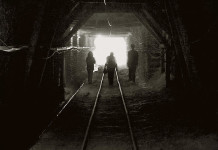
WHILE Northam Platinum CEO Paul Dunne claims to be “cautious” about platinum group metals (PGMs), a detailed presentation he gave at the JSE on Friday indicates a more positive outlook.
In a nutshell, prices are rising for the key PGMs that Northam produces – platinum, rhodium and ruthenium – with increasing lease rates reflecting tight market conditions while demand is growing and is likely to continue to do so.
At the same time supply is falling because of the permanent damage done to the production capacity of South African mining companies by years of under-investment and because time has run out to get new platinum supply on line rapidly.
Further, the supply of PGMs – in particular rhodium – from recycling operations was dropping markedly.
Putting it all together Noah Capital analyst René Hochreiter reckons that a “massive earnings per share recovery” was likely for Northam in its current 2026 financial year
He commented: “The platinum market is likely to be in a one million ounce deficit in 2025; rhodium in a 50,000 oz (5%) deficit and palladium balanced. Platinum, palladium and rhodium lease rates remain high at 10%, 4% and 15% respectively.
“The market is tight. Demand for platinum from jewellery, investment and industrial demand is strong. In rhodium, recycling is low. Old mines are shutting meaning supply is dropping and autocat loadings are rising.
“Rhodium may be in for another squeeze soon. Northam also produces more ruthenium than rhodium, a market that could see prices as high as rhodium from Artificial Intelligence demand.”
According to Dunne, it takes at least 10 years to deliver a sizeable mining project citing the example of Northam’s Booysendal mine which took 12 years to get from zero production to the current nameplate output of 500,000 oz of PGMs.
“So it’s too late to satisfy future demand in 2030 from primary mining. South African platinum production peaked at 5.4 million oz in 2006 but the country will be lucky to produce 3.8m oz this year,” said Dunne.
“That is a significant decline and that rate of decline will continue because of a lack of a new project work to replace the older shafts.
“The damage has been done and continued depletion is inevitable. It remains our considered opinion that the metals market underestimates the impact of the last 15 years of underinvestment.”
Dunne even stated the platinum supply/demand balance indicated there was space for new entrants to come into the business which is a surprising admission from one of the major platinum companies.
The platinum establishment has traditionally warned against newcomers getting into the business because of worries about their production oversupplying the market.
Even so, Dunne stresses the huge problems facing new projects because of the time delays to get into production; the massive costs of up to R20bn to build a twin vertical shaft mine and negative investment environment issues in countries like South Africa
“In the current market it is too early for boards of directors to be confident enough to pull the trigger on a very big project. But, if prices do continue to be supportive, we may see some initial ‘bolt-on’ or brownfields work coming to the fore in the next year.
“More visibility is needed. Another year of this supportive price environment may encourage boards to do something.”
But then there was the need for an investment environment that would encourage investors to support new projects which was the crux of current discussions between the Minerals Council and the South African government over the proposed new Minerals and Petroleum Resources Development Act.
Said Dunne: “Southern Africa needs to be able to attract capital and that capital will have to be raised as equity or debt. That has a price which is higher if you have a less favourable backdrop against which you are trying to operate.”
Cost of debt for mining projects in South Africa was currently more than 17% because of the risk premium versus around 12% in previous years.











